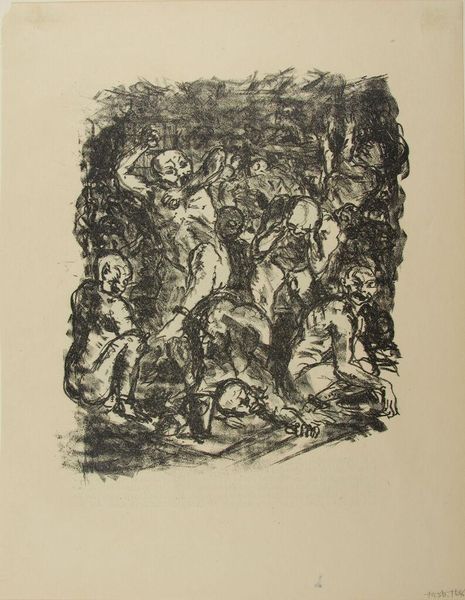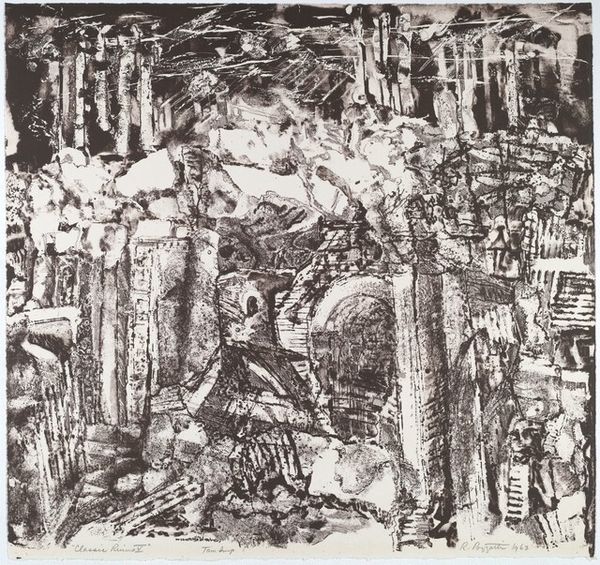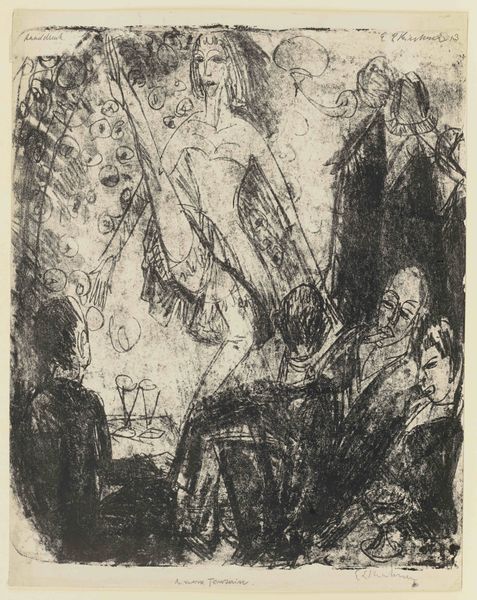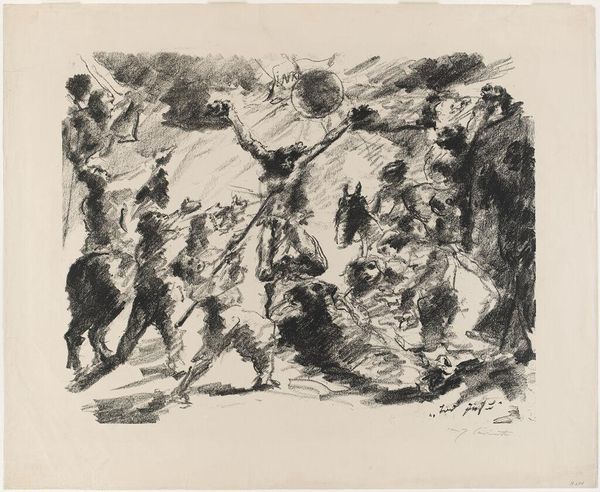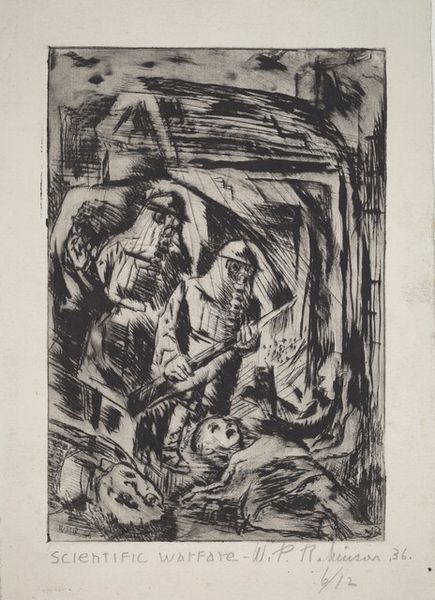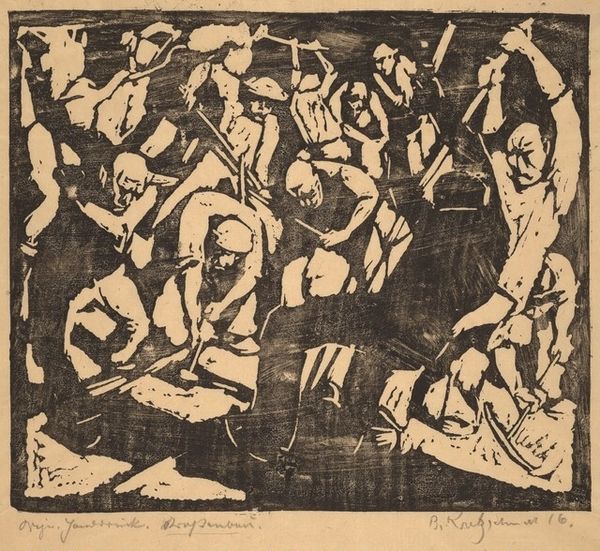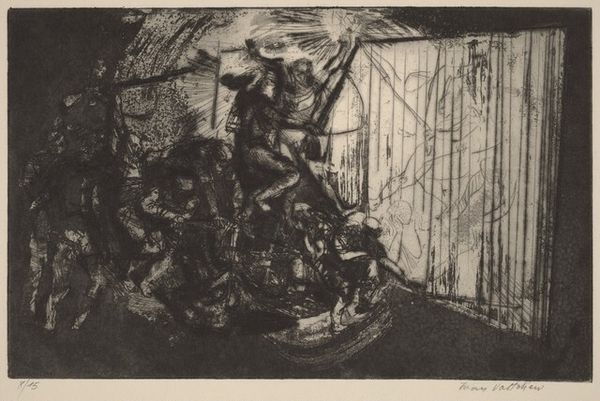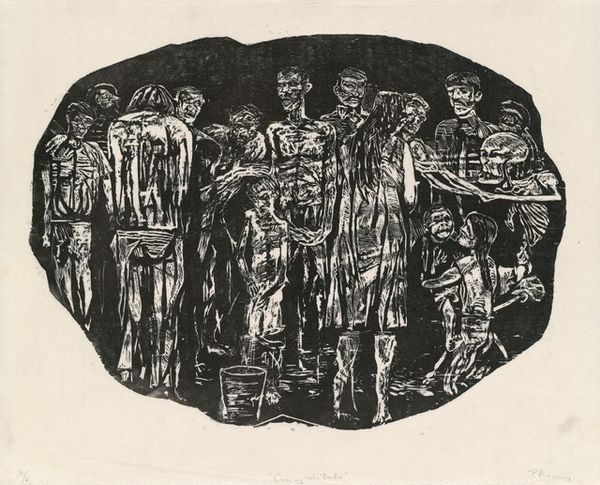
# print
#
expressionism
#
history-painting
Dimensions: image: 27 × 23 cm (10 5/8 × 9 1/16 in.) (irregular) sheet: 50 × 37.5 cm (19 11/16 × 14 3/4 in.)
Copyright: National Gallery of Art: CC0 1.0
Curator: This intriguing work is entitled “Aufzug der Polizei von Bagdad,” or “Procession of the Baghdad Police.” Created by Paul Gangolf sometime between 1879 and 1945, it’s a print rendered in the expressionist style. Editor: My initial reaction is a sort of dizzying disorientation. The contrast is sharp, black against white, almost aggressively so. And the image… chaotic? But a controlled chaos, I suppose. Curator: Indeed. Gangolf's use of the print medium lends itself well to the unsettling energy. The harsh lines seem to depict not just a procession, but also perhaps a feeling of unrest. What about Baghdad’s history might have inspired Gangolf to create this vision? We know that throughout this period, the city saw a confluence of Ottoman, British, and local powers vying for influence. The image could symbolize these turbulent transitions. Editor: It definitely echoes that political turmoil. I can almost feel the oppressive atmosphere through the intense cross-hatching and dense composition. Those repetitive lines closing in—are they bars? Imprisonment of some sort? The whole scene teeters on the edge of claustrophobia, really. I find myself searching for details, for individuals, but everything melts into this churning, monochromatic mass. Curator: Absolutely, and considering Gangolf’s leanings toward expressionism, the scene likely symbolizes a universal unease with power structures. Expressionism allowed artists to convey emotions and experiences instead of literal depictions. What is Gangolf’s emotion here? The print almost serves as an accusation. Is it fear, anxiety, anger, disillusionment? Editor: Probably all of that! It’s as if the police are not a force for order but an embodiment of all the instability of that time. Though I feel its emotional resonance more strongly than understanding the literal portrayal of historical figures and details. This isn’t a celebration of law; it’s an expression of… something darker. The way it blends historical context and deep feelings is striking. Curator: Gangolf presents us not merely with a procession of police, but with the weight of historical anxieties. That tension and his ability to communicate it are what really make this piece stay with me. Editor: I agree. It makes me question authority and my place within it—more than anything, Gangolf invites me to think.
Comments
No comments
Be the first to comment and join the conversation on the ultimate creative platform.
